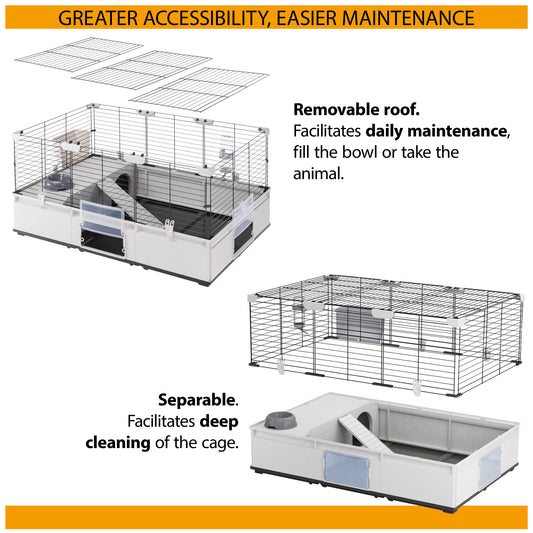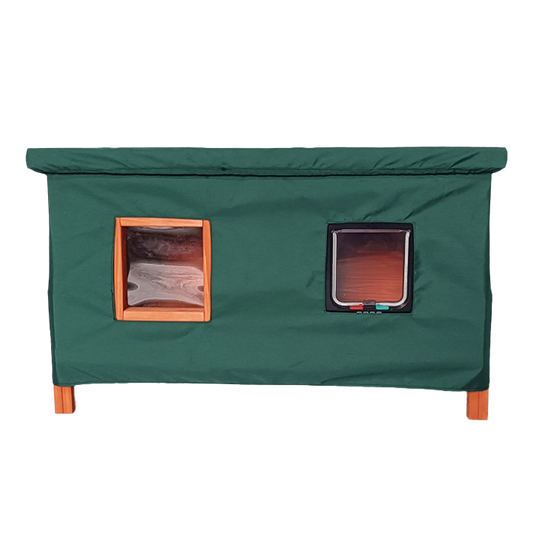By Karen Cornish
Taking a holiday with your four-legged friend can be a wonderful adventure – spending quality time together relaxing and exploring new places. However, to ensure a stress-free experience for everyone, we need to make a few extra considerations and preparations. Follow our guide to preparing for a pet-friendly holiday so that it’s full of happy memories and a positive experience for all.
Bringing your dog
First thing’s first – should you really be taking your pet dog on holiday with you? Not all pets are happy to travel and some dogs can find long journeys or a change of routine very stressful. Be honest about what you think your pet can cope with and do not put them under any unnecessary pressure.
If you have an elderly dog or a dog in poor health, they may be happier staying in their own home with a family member or trusted friend instead of taking a trip. If your dog is too unwell or anxious to enjoy a holiday, you are unlikely to enjoy it yourself either.
Leaving your dog
If after careful consideration you decide that it would be better to go away without your dog, you will need to make sure they are properly provided for in your absence. There are three main options when it comes to holiday pet care if you do not have a family member or trusted friend who is able to care for your dog while you are away:
· Dog boarding facilities – These are establishments where dogs are housed in individual kennels and exercise areas that are located in a separate building from the owner's residence. Boarding kennels can hold a large number of dogs so some dogs can find them stressful. Since October 2018, licensed dog boarding kennels must meet certain criteria, including having access to their own sleeping area at all times, at least one walk a day, enough space in the kennel to move around and toys to keep them occupied.
Before booking into a boarding kennels, visit the site to look around and ask lots of questions to help inform your decision. Ask your vet for recommendations or read online reviews beforehand.
· Home dog boarding – if you want your dog to have a more homely experience you might like to consider someone offering home boarding. Unlike a boarding kennel, dogs who are home boarding will stay inside a sitter’s home and they will be the only pet, other than any resident pets.
If your dog doesn't get along with other dogs, you can find pet sitters who don't have any pets of their own. Search for an organization that can connect your dog with a suitable sitter and read reviews online before making a decision.
Pet Sitters - Pet sitters are individuals who will stay in your house while you're away to take care of your pet. The advantage of this is that your dog won't have to leave their familiar environment, and your home won't be left vacant during your absence.
Again, find a reputable agency and ask other dog owners for recommendations. The National Association of Professional Pet Sitters maintains a directory of its members in your vicinity.
To improve your chances of finding a good dog sitter, plan ahead and make arrangements for their care before your vacation. Getting it right will mean a stress-free holiday for you knowing your dog will be happy and well cared for.
Home or away?
If your pet will enjoy going on vacation with you, the next thing to do is choose where to go. Unfortunately, post-Brexit, the end of the Pet Travel Scheme (PETS) has made taking your dog abroad more difficult. Prior to 1st January 2021, pets with a pet passport could travel easily with their owner to other European countries and then return with them to the UK without the necessity for a stay in quarantine.
Since 1st January 2021, the process has become more complicated as pet passports are no longer valid. They have been replaced by an Animal Health Certificate, which can only be issued by an ‘official veterinarian’ (OV) in Great Britain. Certificates need to be completed no more than 10 days before travel and a dog needs to be vaccinated against rabies at least 21 days before travel. Before taking your pet overseas, consult your vet first to ensure you understand what is involved.
Over the past decade – particularly since the Covid-19 pandemic – more people have chosen to holiday closer to home by staying in the UK. This has led to an increase in the number of holidaymakers taking their pets with them and according to research by Direct Line, nearly 12 million Britons planned to take their dogs on holiday last summer.
The UK tourism industry has recognised the power of the ‘hound’ pound and that holidaymakers with pets are big business. This has led to dog-friendly holiday hot spots popping up all around the country. The RAC lists the Yorkshire Dales, Snowdonia, Peak District, Cornwall, and Dartmoor among its top 10 dog-friendly places to visit in the UK. Whether you are looking for long beach walks, woodland retreats, or city breaks, you’ll find something pet-friendly to suit your requirements and budget.
Accommodation
There are pet-friendly options for all sorts of accommodation types these days so whether you’re looking for a campsite, self-catering cottage or luxury hotel, there’s no reason why your dog can’t come too.
Your choice of accommodation is likely to come down to budget but it’s worth considering what might best suit your pet too. While a lot of hotels have opened their doors to canine guests, your dog might not enjoy the hustle and bustle of a busy hotel.
Also, if your dog can be rather vocal it is probably going to cause you (as well as other holidaymakers) a bit of a headache! Dogs are quite often not allowed in dining areas so eating meals in a hotel could prove to be a problem, as well as many hotels not allowing dogs to be left in rooms unattended.
Self-catering accommodation – such as static caravans, cottages and chalets – can feel more homely to a dog and some even have their own exercise areas or gardens that pets can use. Camping – either in a caravan, motorhome or tent – can be a great way to experience the open space of the great outdoors and most campsites these days are pet-friendly.
If you’re looking for something a little different there are dog-friendly cabins, shepherd’s huts, yurts, treehouses, canal boats and converted railway carriages.
The definition of 'dog-friendly' varies from person to person. There are individuals who may have a certain level of acceptance towards canines, whereas others actively promote welcoming these four-legged companions. Prior to making a reservation, it is advisable to verify any limitations or requirements with the vacation provider and ensure that you fully understand and are willing to comply with the regulations.
Before you leave
Once you’ve chosen your location and booked your accommodation, it’s a good idea to do a bit of research in advance to scope out the local amenities ahead of time. This is particularly useful for dog-friendly cafes, restaurants, beaches, and tourist attractions.
Find out where your pet will be welcome and if there are any restrictions. If you need suggestions, the tourist information office or where you are staying can assist you, and you can also check out thegooddogguide.com, which is a directory of dog-friendly places in the UK.
It is a good idea to research vets local to where you are staying in case your pet falls ill while you’re away. Keep a note of their contact details with your holiday documents. It is also a good idea for your pet to have a health check with your own vet before you go away to ensure they are fit to travel. This is particularly important if you have an elderly dog or a dog in poor health.
Dirty dogs make unpopular guests so it’s a good idea to give your dog a wash and groom before going on holiday – especially if this is in a hotel or holiday home.
Ensure your dog has an up-to-date ID tag in case they get lost and that the contact details held by your pet’s microchip database are current. Some owners like to add a temporary ID tag to their pets’ collar giving their holiday contact details or mobile phone number should their dog go missing while they’re away.
Packing for your pet
Here are a few essentials that you should remember to pack for your pet when you are going away on holiday:
· Bedding
· Enough food and treats for the duration of your trip, plus some spare
· Food and water bowls
· Any current medication
· Good supply of poo bags
· Favourite toys
· A towel
· A brush
· A first aid kit
· Documentation such as your own vet’s contact details and pet insurance information
Travelling with your dog
If your dog is not used to long car journeys it is a good idea to build up to them gradually and preferably get them used to car travel when they are still young. Using treats and praise as positive reinforcement will soon have your dog enjoying the time they spend in the car.
The Highway Code states that drivers must suitably restrain dogs in vehicles to prevent them from causing a distraction or injuring themselves – or other occupants in the vehicle – if the driver brakes suddenly. Travelling with a dog is best done in a crate or with a car harness. The car harness should attach to the seatbelt sockets located in the back seats.
Before making a reservation, it is advisable to verify the pet regulations with the specific transportation company as dogs are generally allowed on buses and trains. Some ferries allow dogs in cabins, while others require them to stay in vehicles or kennels onboard.
Top tips for car travel
· On a long journey make sure you schedule plenty of stops so that your dog can go to the toilet, stretch their legs, and have a drink. This might make your journey longer but it will be much more comfortable for your pet.
· Pack plenty of water for your dog and keep a water bowl handy. Pet travel bowls are great to leave in the car so that you always have a solution to hand when your dog needs a drink.
Make sure to check the temperature of the car, especially if your dog is in the trunk. It can become extremely hot back there without your awareness.
· Some dogs can suffer with travel sickness. It helps to not feed a dog within two hours of your departure time. If your dog is particularly sensitive, your vet can advise on medication.
· Give your dog a favourite toy or blanket in the car to help settling them and keep them relaxed during the journey.
· Using sunshades in your car, particularly before your dog gets in on a hot day, will give them a cooler and more comfortable environment.
· Never allow your dog to travel with their head out of the window of a vehicle.
· Keep your pet entertained with a non-edible chew like a nylon bone or Kong. This will prevent a bored dog from chewing on seatbelts and upholstery.
· Before you go on a long journey, go dog walking or run to tire them out. This way they will be more relaxed and happier to settle during your trip.
· NEVER leave your pet alone in a vehicle on a hot day. Car temperatures can become dangerous quickly, even with open windows and water. When it is 22 degrees Celsius outside, the inside of a car can reach an unbearable 47 degree Celsius within an hour.
· Be prepared for accidents – poo bags, pet grooming wipes, anti-bacterial hand gel and tissues can all come in handy!
If you enjoyed this article why not read:
Essential Tips for Camping and Hiking with Your Dog
Walk in Style: The Ultimate Guide to Stylish and Functional Dog Harnesses









